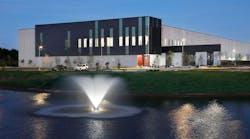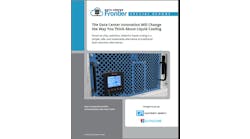The cloud covets connectivity. That’s why Digital Realty is happy to talk SMACC about its data centers.
SMACC is an acronym for “Social, Mobile, Analytics, Cloud & Content,” and it’s the market segment that’s been driving growth for Digital Realty and many other data center service providers. As cloud growth continues, SMACC companies require fast network hookups and lots of space to deploy data center infrastructure.
Digital Realty has a solution: the connected campus, which brings together real estate and network services.
As the dominant player in the market for mission-critical facilities, Digital Realty is a trendsetter whose actions ripple through the industry. It was a pioneer in offering “turn-key” data halls, and has built some of the world’s largest data center campuses. Last week it completed its $1.9 billion acquisition of Telx, a colocation provider that specializes in making network connections between tenants.
Telx is a strategic acquisition for Digital Realty. Data centers with rich connectivity have a growing advantage in the cloud marketplace, as customers seek direct connections to major public clouds and key traffic partners. With Telx, Digital Realty acquires a network of interconnection facilities, while boosting the connectivity – and hence the value – of its existing data center footprint.
With the Telx deal completed, Digital Realty now operates more than 24 million square feet of technical space in 30 markets around the globe. The acquisition also gives Digital Realty a more significant position in the colocation business, a segment of the market where it has been seeking to build a larger presence.
Connected Campuses, and Why They Matter
Telx built its business in carrier hotels – the big-city data hubs where dozens of providers make connections between their networks. It started at 60 Hudson Street in Manhattan and 55 Marietta Street in Atlanta. Telx soon expanded to carrier hotels in other markets (partly through a partnership with Digital Realty). But these big-city buildings tend to be cramped skyscrapers with little room for the large footprints being sought by cloud providers. The solution was to build larger data centers in the suburbs, and use fiber to “tether” them to the meet-me rooms (MMRs) in urban carrier hotels, where networks make physical connections.
The Telx deal allows Digital Realty to pursue a similar-strategy, only super-sized.
“One of the advantages we saw was tying that interconnection business together with our campus footprints at scale,” said Chris Sharp, the Chief Technology Officer of Digital Realty. “The industry has forced companies to choose A or B, either where the (interconnection) ecosystem is or where you have space to expand. Interconnection is at the core of a lot of customers’ services. It’s really a game-changer. We definitely see a lot of opportunity, as a lot of the facilities we operate in don’t have an MMR in them.”
A slide from Digital Realty’s Analyst Day presentation outlines the opportunity to make connections between connectivity hubs and larger campuses. (Image: Digital Realty)
Digital Realty has built huge cloud campuses in the suburbs of major business hubs. The Digital Ashburn project in northern Virginia houses 1.5 million square feet of data centers, while the company has similar huge campuses in Silicon Valley and on the outskirts of Dallas and Chicago. Data center hubs offer economies of scale, enabling companies to rapidly add server capacity and electric power as more workloads shift from in-house IT rooms into these massive server farms.
While Facebook, Google and Apple build these campuses to power their own Internet operations, Digital Realty operates multi-tenant campuses that offer the benefits of scale to enterprise companies and service providers.
Which brings us back to SMACC – Social, Mobile, Analytics, Cloud & Content. In recent quarters these companies have been Digital Realty’s most active customers, especially in the major markets where cloud campuses are located, as illustrated in this slide from Digital Realty’s recent Analyst Day.
Digital Realty has experienced strong leasing success with SMACC (Social, Mobile, Analytics, Cloud & Content) customers in Dallas, Northern Virginia and Chicago. (Image: Digital Realty)
As we noted, these customers crave connectivity. Tethering these cloud campuses to Telx interconnection hubs offers even more network options for the SMACC crowd, and can help extend these ecosystems from the urban core to the suburbs.
Colocation Meets the Cloud
Digital Realty specializes in selling wholesale data center space, in which a tenant leases a finished suite of “turn-key” raised-floor space. Telx focuses on colocation, in which tenants buy smaller amounts of space by the cabinet or cage.
In recent years Digital Realty has begun to build business in the colocation sector, prompted by its acquisition of the 365 Main data center in San Francisco. The Telx deal dramatically accelerates that process.
“Digital was investing in a colo offering, but we understood that there are a lot of expenses in offering colo services,” said Sharp. “We could leapfrog a couple of years (of building in-house).”
With improved colocation and interconnection offerings, Digital has the option to convert existing vacant space to a colocation model. This could be attractive for companies that want space near cloud providers or content companies that are tenants at Digital Realty’s campuses.
“We are actively going through the process of evaluating Digital Realty’s existing footprint and retrofitting some of that capacity for a colo offering,” said Sharp. “Now that we can have colo right next to a cloud environment, you can have an elastic hybrid cloud. For example, now you can have your primary infrastructure access SoftLayer in 1.5 milliseconds.”
New York State of Mind
The Telx acquisition also boosts Digital’s position in the New York/New Jersey region, one of the nation’s leading markets for data center and colocation space. With the deal, Digital Realty adds more than 620,000 square feet of space in the NY metro market, including hubs at three major Manhattan carrier hotels – 60 Hudson Street, 111 8th Avenue and 32 Avenue of the Americas – in addition to a growing campus in Clinton, N.J.
Digital Realty’s global network of data centers. (Image: Digital Realty)
Sharp says Digital Realty continues to get requests for footprint in new markets, primarily overseas.
“We’re activly looking at new markets globally,” he said. “Singapore’s been a phenomenal market for us, so we may look at perhaps Tokyo, Hong Kong and other Asian markets.” Significantly, Sharp said the demand is coming from companies based in Asia, rather than U.S. companies looking to expand their operations in the Asia/Pacific region. But he expects that some of the large cloud players may opt for wholesale or colo space in global business hubs.
“A lot of these cloud providers were trying to service the world from one or two data centers in North America,” said Sharp. “We definitely see distribution capabilities as being more important.”
Sharp said Digital is closely monitoring the recent EU “safe harbor” ruling, and the evolution of policies that impact where data resides.
“Data sovereignty is an issue,” said Sharp. “You can no longer serve all of Europe from a couple of markets. That definitely plays into the markets we want to evolve into.”
But Digital will likely remain cautious about secondary market in the U.S., which have seen increased activity but represent more expansion risk than major markets.
“The Tier 2 markets are interesting for a smaller subset of customers,” he said, adding that Digital “has a very strict methodology for evaluating markets.”






